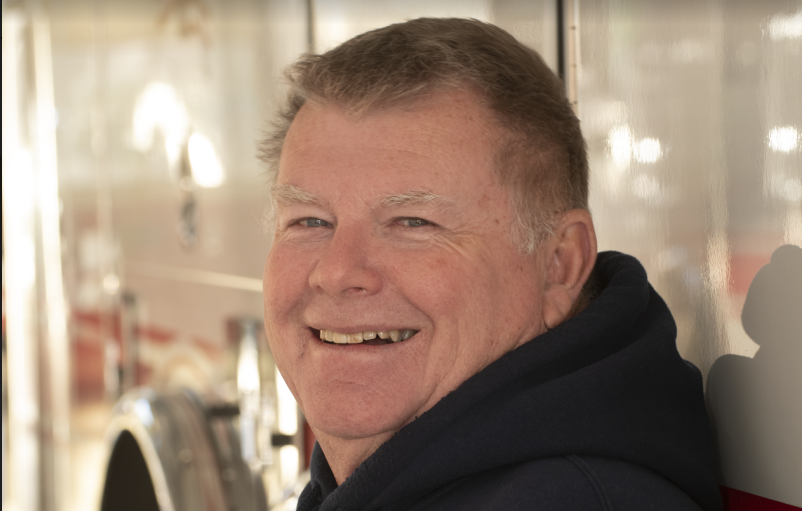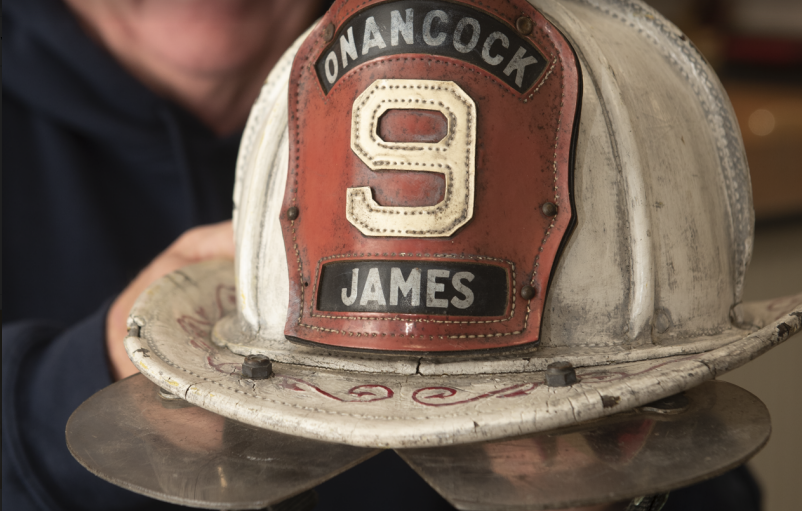
Story and Photos by Jim Ritch –
B.W. James and Scott Chandler enjoy the rare distinction of having served the Onancock Fire Department for more than 50 years.
But each firefighter has lived with the department almost from the day he was born.
Chandler, now vice president, remembers riding his Western Flyer bicycle through town as the siren atop what is now the Onancock municipal building bellowed.
“Growing up in Onancock, when the whistle blew, you went out to find out what it was. It was addicting,” he said.
For James, firefighting might have been in the DNA he inherited from his grandfather, R.G. Finney, a founding member of the Onancock department, and father, Bable James, who served as its president.
James’ son, Adam James, may have inherited the serves and serves as the current chief.
In the 1970s, when B.W. James and Chandler joined the department, they turned out in black jackets, leather, “New Yorker” helmets, and high rubber boots.
They rode the back steps of the department’s two firetrucks, holding on like action heroes as the trucks roared down the road.
At fire scenes, they trained “by doing what they told us to do,” said Chandler.
Often this meant unfurling hoses connected to pumpers that discharged water at up to 500 gallons per minute, about one-fourth the capacity of the town’s current trucks.
(Article continues below the slideshow.)
Initially, neither firefighter wore an air pack, the first of which arrived a few years after James and Chandler joined.
Without air packs and apparel that fully covered their torso, entering a fiery building became even more dangerous.
Firefighters who sported the fashion of the day, double-knit pants, sometimes had the seats of their pants melt in the extreme heat, they said.
Then, the department responded to about 50 fire calls a year and 150 ambulance runs.
In 2021, the department handled about 264 fire calls and 1,003 ambulance calls.
James, chief engineer for the department, responded to more than half of the fire calls last year.
On his pumper rode firefighters each with about $11,300 in apparel and gear, including bunker pants and air packs.
And the firefighters train extensively before ever responding to a call.
Chandler, who helped build the department’s emergency medical services, said that in 1969, ambulance crews had to have at least 16 hours of first-aid training that was taught locally by Dr. Walter Eskridge.
Members who aspired to be an emergency medical technician needed another 81 hours.
Today, 300 to 400 hours of training are required.
To become a paramedic, some courses are so specialized that trainees attend them at Tidewater Community College in Virginia Beach.
“We’ve seen it go from very basic to what it is today,” said Chandler.
“It takes a team to make it work and we’re very proud to be a part of that team,” he said.







